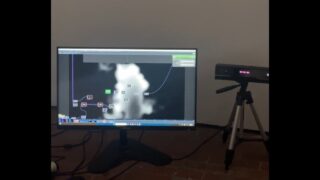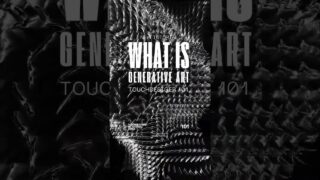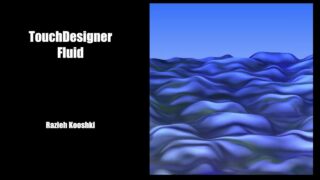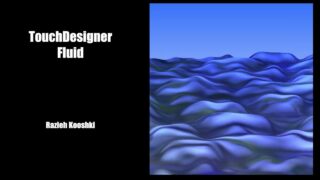What is Generative Art: TouchDesigner’s Role in Art, Algorithms, and Creative Systems Explained
Learn its core principles, history, and how tools like TouchDesigner transform creativity through algorithms and systems. Project Files Here 👉 https://okamirufu.link/project_files_collections
==============
*Video Summary*
00:00 *Intro*
01:38 *Core Idea of Generative Art:*
Designing frameworks of rules and parameters to create art
with structured spontaneity, such as dynamic color gradients,
geometric shapes, and organic particle behaviors.
03:19 *The Power of Algorithms:*
Utilizing computational methods like Perlin noise, fractals,
and cellular automata to generate patterns and textures
inspired by both nature and abstraction.
05:14 *Human-Machine Collaboration:*
Generative art redefines authorship by blending artist-defined
rules with machine-executed randomness, creating unexpected
artistic outcomes.
06:30 *Historical Foundations:*
Examples like Mozart’s Musical Dice Game and Islamic geometric
patterns demonstrate pre-digital generative principles combining
rules with randomness.
09:43 *TouchDesigner as a Tool:*
Real-time, node-based platform enabling artists to craft
complex generative systems with seamless integration of
sensors, AI, and procedural design.
11:02 *Recreating generative art works:*
We will recreate some well-known generative art projects,
one by Vera Molnar and another by Frieder Nake. We’ll use
popular operators like the Noise Operator and Feedback,
applying techniques such as instancing within a Geo Component.
23:55 *Key Artists in the Field:*
Innovators like Mario Klingemann, Casey Reas, and Michael
Hansmeyer explore generative techniques in AI, algorithmic
visuals, and architectural design.
Interactivity in Contemporary Art:
Modern generative works engage audiences through real-time
systems, allowing viewer actions or environmental data to
influence the artwork.
25:19 *Cultural and Philosophical Impact:*
Generative art challenges traditional creativity, highlighting
themes like ecological interconnectedness, the role of
algorithms, and the beauty of unpredictability.
==============
Artist Mentioned:
*Frieder Nake (1960s)*
In the 1960s, Frieder Nake pioneered the use of algorithms to create art, producing intricate drawings using early computers. His work demonstrated the potential of generative systems to redefine artistic practice, blending human creativity with the precision of machine execution.
*Vera Molnár (2023)*
Often regarded as the “mother of generative art,” revolutionized the field in the 1960s and 1970s by using computers to explore geometric abstraction. Through early programming languages, she introduced randomness into her compositions, challenging traditional notions of authorship and creating works that balanced control with unpredictability.
*Harold Cohen and AARON (1980s)*
Harold Cohen developed AARON, a groundbreaking program capable of generating autonomous artworks. AARON blurred the line between artist and machine, raising philosophical questions about creativity and redefining the role of algorithms in artistic expression.
–
*Lets Connect*
*Instagram:* https://okamirufu.link/instagram
*TikTok:* https://okamirufu.link/tiktok
*Pinterest:* https://www.pinterest.co.uk/okamirufu/
*Other:* https://linktr.ee/okamirufu
–
*Merch:* 👉 https://society6.com/okamirufu
*My Music* 👉 https://okamirufu.link/my_music
*Music Playlist* 👉 https://okamirufu.link/playlist_1
–
I hope you liked this tutorial! If you have any questions
Feel free to ask in the comments below.
Subscribe to stay updated on future tutorials
*Stay weird & Listen Music*
*Okamirufu*
#touchdesigner , #generativeart , #creativecoding , #digitalart , #interactivedesign , #vjloops , #motiongraphics , #newmediaart , #projectionmapping






![TouchDesigner Tutorial 55 – Case Study[Generative Design: P.2.2.5_01 Structural Density from Agents]](https://alltd.org/wp-content/uploads/2024/07/touchdesigner-tutorial-55-case-s-320x180.jpg)


![TouchDesigner Tutorial 53 – Case Study [Generative Design: P.2.2.4_01 Growth Structure from Agents]](https://alltd.org/wp-content/uploads/2024/03/touchdesigner-tutorial-53-case-s-320x180.jpg)
![(ES)TouchDesigner Tutorial 53 -CaseStudy[Generative Design: P.2.2.4_01 Growth Structure from Agents]](https://alltd.org/wp-content/uploads/2024/03/estouchdesigner-tutorial-53-case-320x180.jpg)